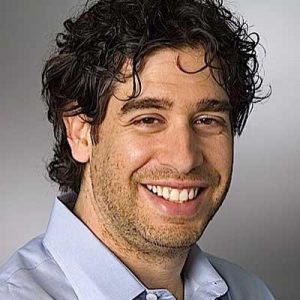Nir Zuk : The Founder of Palo Alto Networks, the American Cybersecurity Company
Another college drop-out and one of the most successful tech entrepreneur, Nir Zuk, always had a dream of starting his own business. It can be judged through his career graph that he likes to handle things on his own rather than following the order of some superior authority. This genius kid from Israel is a serial entrepreneur, who is really allergic to bureaucracy. The founder of Palo Alto Networks is happy in running a small business than working for a multimillion company.
Early Life
Zuk was born and brought up in Rehovot, Israel. He was in high school when he convinced his parents to buy him a Dragon 64 computer, as a few years ago, one of his friends has also got one. He started learning computer programming by reading books and was capable enough to write small codes, only in a year.

When he was sixteen, he started writing commercial programs and earned enough money. At the same time, the first computer viruses very emerging, which caught Zuk’s attention immediately, and he became of the first persons who wrote one of the earliest virus programs.
According to the rule of the Israeli government, Zuk had to go through military training. But as he was a whiz kid, he got a job in the military’s IT department. Alongside his job in the military, he started going to college, where he took mathematics as his majors.
Career
Zuk spent a whole five years in the military, and before he could complete his degree, on the basis of his experience, he was recruited by Checkpoint, in 1994. Here he became the part of the team that was handling a major project and along with them, invented a technology called stateful inspection, which is the basis of network security technology today.
In 1997, Zuk moved to the US, to work at the U.S. head office of CheckPoint in Redwood City, California. After moving to the US, he worked with the same company for two more years and left the job.
Soon after leaving Checkpoint, Zuk went on to found his own startup company OneSecure, in 1999 and started working on the intrusion prevention system that sits behind the firewall, to make sure that the traffic passing the firewall is attack free. The system is the first of its kind.
In 2002, OneSecure was acquired by NetScreen. Even after the acquisition, Zuk retained his position of CTO in the company. Being in the company, Zuk had adviced NetScreen, to build their own firewall, such that it would be more profitable for them, but NetScreen was not ready to take the risk. Hence, after a year, Zuk left the company, to found his own company, and to build its own firewall.
Founding Palo Alto Networks
In 2005, Zuk, after teaming up with 25 of his colleagues from NetScreen, founded Palo Alto Networks. He had raised a total amount of $9.4 million for the startup. Within two years of the inception of the company, in 2007, it released its first firewall product, which was the world’s first “next-generation firewall”.
By 2011, Palo Alto Networks had become one of the most prominent cybersecurity firms and was listed as a leader on its enterprise firewall Magic Quadrant by Gartner. The company went public on the NYSE on July 20, 2012, having raised $260 million with its initial public offering.
In 2014, along with Fortinet, Mcafee, and Symantec, Palo Alto Networks founded the Cyber Threat Alliance, a not-for-profit organization for improving cybersecurity.
The revenue earned by the company in 2018, was estimated to be over US$2.27 billion. Currently, it is providing its service in the field of network security, cybersecurity, cloud computing. The company has got its headquarters situated in Santa Clara, California, U.S.

Yashica is a Software Engineer turned Content Writer, who loves to write on social causes and expertise in writing technical stuff. She loves to watch movies and explore new places. She believes that you need to live once before you die. So experimenting with her life and career choices, she is trying to live her life to the fullest.





